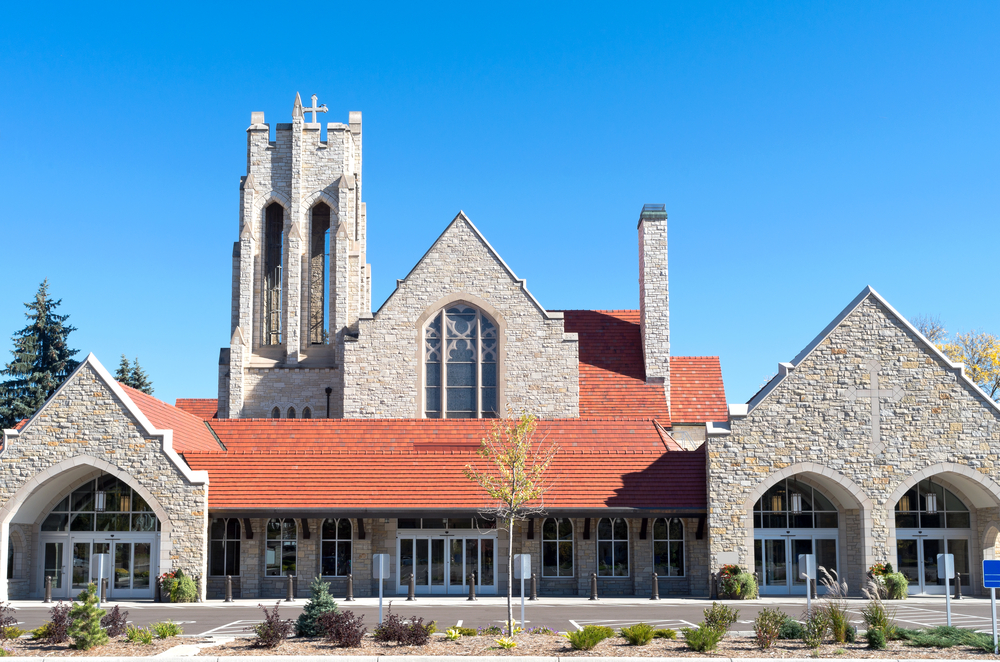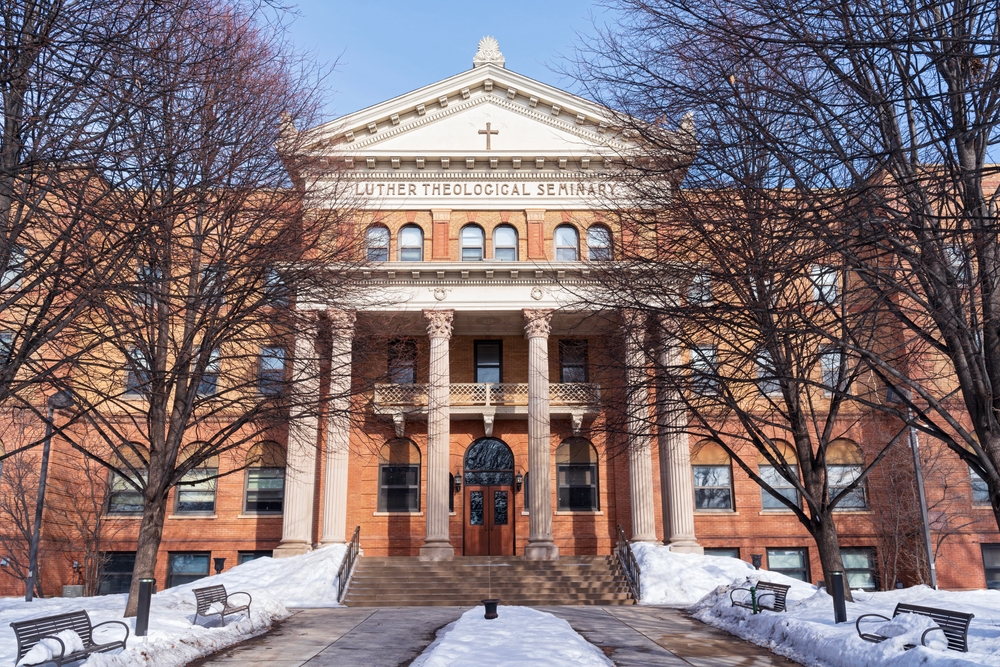Minnesota is rich in Lutheran history. From majestic churches to noteable educational institutions, there are numerous historical and cultural sites across our state that highlight our Lutheran roots and tell stories of faith and community.
Whether you’re a history buff, a faithful congregant, or simply curious, these top 10 Lutheran sites in Minnesota offer a glimpse into the enduring legacy of Lutheranism in our great state. Let’s start the tour!
10 Minnesota Lutheran Sites Worth a Visit
Since Norwegian, Swedish and German Lutherans first began settling Minnesota in the 1850s, there have been community landmarks across our State. Here some of the more prominent and historically significant as well as a few small surprises:
1. Christ Lutheran Church on Capitol Hill, St. Paul
Listed on the National Register of Historic Places and nestled in the heart of St. Paul, Christ Lutheran Church stands as a masterpiece of early 20th-century architecture. This impressive building was built near the State Capitol between 1909-1915. The architectural style is Beaux-Arts, which was popular in Paris during the mid and later 19th century.

2. Mount Olivet Lutheran Church, Minneapolis
With some 14,000 members, Mount Olivet is one of the largest Lutheran congregations in America. It was founded in 1920 and has grown to include a retreat center near Lake of the Woods, Cathedral of the Pines camp and several care facilities.
3. First Lutheran Church, Duluth
Built as the first Norwegian Danish Lutheran Church in 1870, this historic church has served Duluth’s faithful for generations. Known for its stunning views and rich Scandinavian heritage, First Lutheran offers a unique window into the spiritual life of Minnesota’s early settlers. It’s also known for its stunning pipe organs installed by local builder Daniel Jaeckel who based his design on German organs used during the time of J.S. Bach.
4. Central Lutheran Church, Winona
Built in 1871, this church is famous for its stunning, hand-blown stained glass windows made from imported European glass. It is also known for its large, Hendickson pipe organ which was installed in 1994. With 1,905 pipes, it’s one of the largest organs the company ever built and features kiln-dried oak that was harvested in Minnesota and Wisconsin.
5. Gustavus Adolphus College, St. Peter
Founded by Swedish Lutheran immigrants in 1862, Gustavus Adolphus liberal arts college is deeply rooted in the Lutheran educational tradition. It is known for its strong programs in music, sciences and liberal arts. Its name was taken from Gustavus Adolphus, the King of Sweden from 1611 to 1632. The campus features 33 sculptures by Minnesota sculptor Paul Granlund, who was an alum of the school. It also features an arboretum which preserves native Minnesota trees and plants.
6. Christ Church Lutheran, Minneapolis
This Southeast Minneapolis neighborhood church became a Minnesota Historical Landmark in 2009. Christ Church Lutheran was designed by master architect Eliel Saarinen, one of the most prominent architects of the 20th century. It is a strong example of modernist religious architecture in America which focuses on design, lighting and acoustics.

7. Luther Seminary, St. Paul
As one of the largest seminaries of the Evangelical Lutheran Church in America (ELCA), Luther Seminary is a crucial hub for Lutheran theologians. It provides education and leadership training within the Lutheran community. The campus is also known for its beautiful architecture and green spaces. The first version was built in 1869 using money funded through sewing circles. The campus that exists today was built in 1900 and is the result of a merger between five separate institutions. Luther Seminary was added to the National Register of Historical Places in 1985.
8. Concordia University, St. Paul
Concordia is a small but renowned liberal arts college founded by Norwegian Lutheran immigrants in 1893. It was formed to prepare young men to enter the Lutheran ministry and continues to maintain a focus on the gospel. It became coed in 1950 and offers diverse programs that reflect its commitment to faith, learning and service.
9. Holden Lutheran Church, Kenyon
This church has a long history of serving rural Southern Minnesota farming communities. While established in 1854, the building itself has been replaced multiple times. The existing building was built 1924 and features immaculate craftsmanship, ornate stained glass windows and an onsite cemetery where many Norwegian settlers are buried.
10. Lutheran Church, Valley Grove
These two small churches just north of Nerstrand State Park, were disbanded in the 1970s but the Valley Grove Preservation Society has maintained them as a tourist site. The simple stone church was built in 1862 and was never demolished when the larger, wooden church was erected just across the road in 1894. Both sit atop a picturesque hill and feature a cemetery containing a trove of Minnesota history.
Lutheran History Comes Alive
Because of Minnesota’s long association with Scandinavian immigrants, we have many opportunities to experience Lutheran history within a few hours’ drive. For a full list of churches on Minnesota’s historical register, see Wikipedia’s historic listing. Have you visited a site that was particularly inspiring? Let us know. Of course, we like to think that the best Lutheran site in Minnesota is King of Kings. We’d love to have you visit for worship on Sunday at 9:30 for traditional service or 10:45 for contemporary service. We look forward to seeing you!

